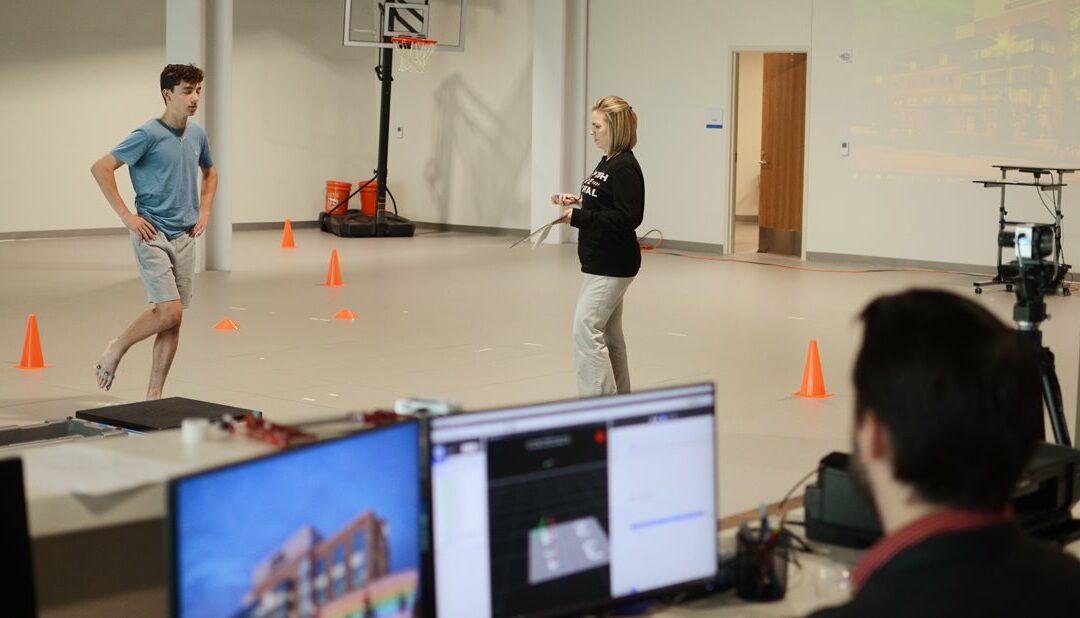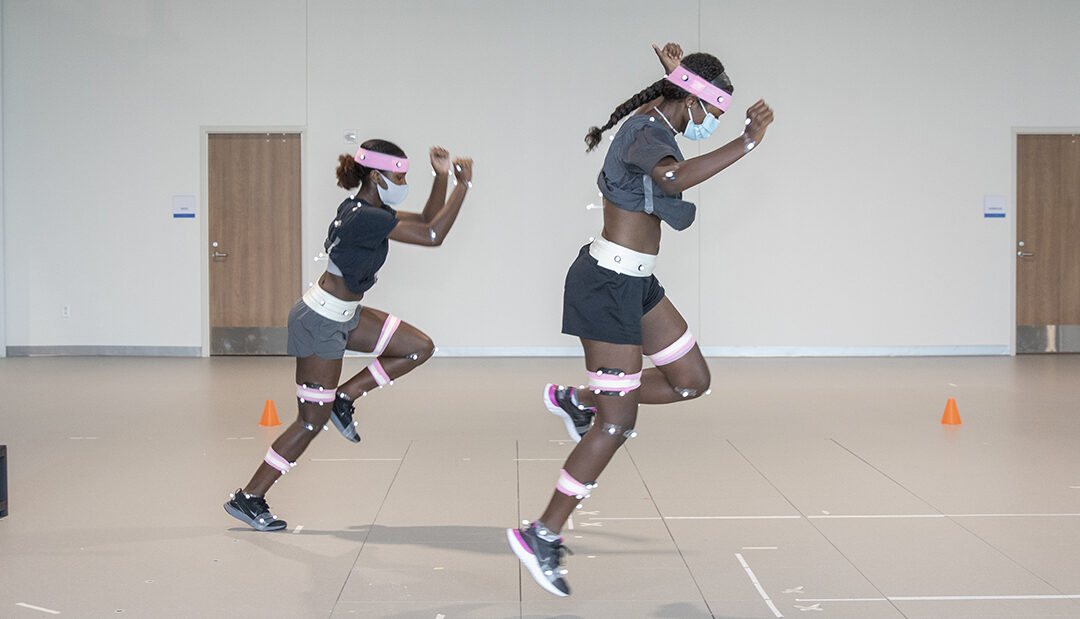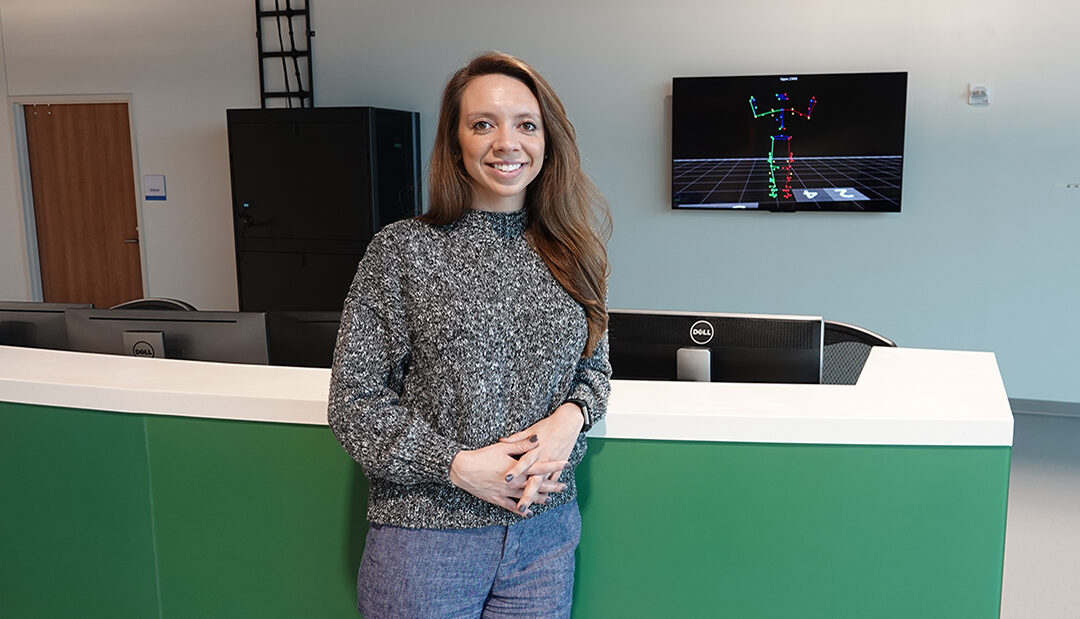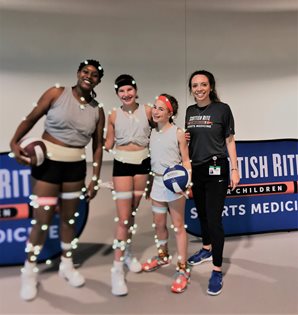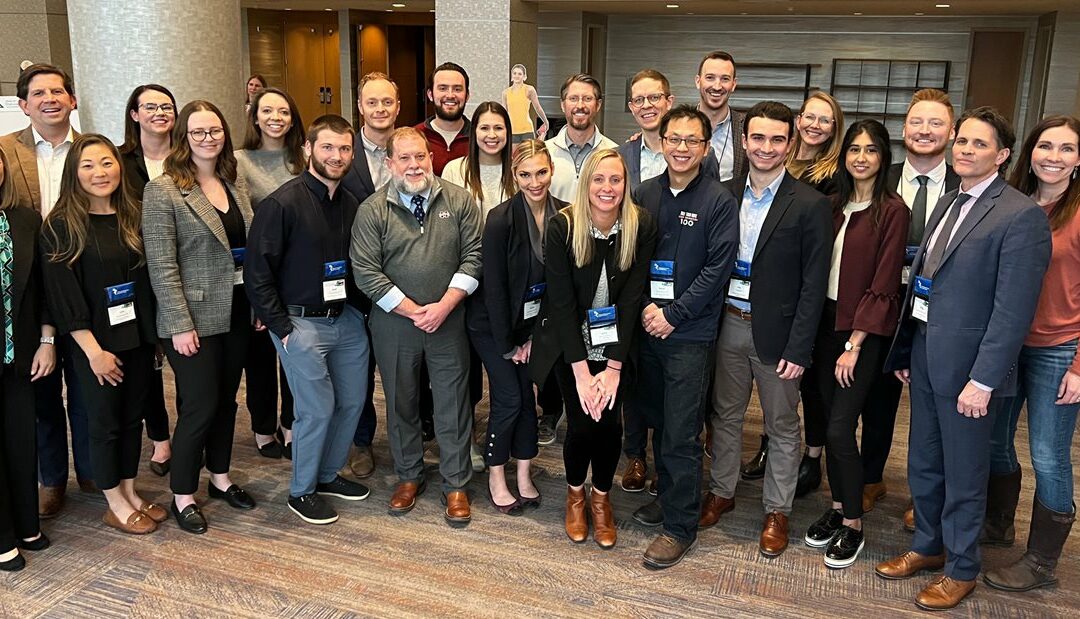
Sports Medicine Team from Scottish Rite for Children Had Strong Presence at PRiSM 2023
The sports medicine team from the Scottish Rite for Children Center for Excellence in Sports Medicine recently attended the 10th Annual Pediatric Research in Sports Medicine (PRiSM) society meeting in Denver, Colorado. Several of our team are founding members in this group leading the way in pediatric sports medicine research.
Medical director of clinical research Henry B. Ellis, M.D., says, “Most conferences are designed to gather one discipline, but this one is inclusive. Scottish Rite had an impressive presence not only in attendance, but also with most of the 23 staff who attended actively contributing.” The Scottish Rite team included sports medicine physicians, pediatric orthopedic surgeons, a radiologist, advanced practice providers, physical therapists, researchers, psychologists and more. Many of them presented and led discussions about important care and treatment techniques for young athletes.
The three-day meeting included a variety of formats for collaboration and learning. Our team presented results from studies at the podium and during poster sessions where authors held conversations with attendees about the projects. The program also included a variety of didactic sessions designed to inform the participants of available evidence on a topic while stimulating discussion for future research.
Some of the noteworthy accomplishments of our team include:
- Our director of Movement Science Sophia Ulman, Ph.D., had an active role in multiple aspects of the meeting. Ulman hosted a program with other movement science experts teaching best practices on applying motion capture in return to sports decision making. Bioengineer Alex Loewen, M.S., and Ben Johnson, P.A.-C., presented a study on measuring changes in pelvic tilt before and after hip surgery. Ulman and Loewen shared another study designed to improve accuracy of trunk testing across movement science labs. Additionally, biomechanist Ashley Erdman, B.S., M.B.A., presented results of a ballerina survey on pointe readiness.
- Perfectly aligned with her passion, Ulman officially assumed responsibility as chair of the Injury Prevention Research Interest Group and provided her peers with the latest research updates on using movement science to facilitate sports injury prevention protocols.
- Musculoskeletal ultrasound expert and sports medicine physician Jacob C. Jones, M.D., RMSK, gave a report on the state of pediatric musculoskeletal ultrasound to the society attending the conference. His specialty in this methodology solidified him as the top choice to address the group with the latest and greatest in the use of musculoskeletal ultrasound for pediatric sports medicine patients. Additionally, Jones presented a poster addressing the use of diagnostic musculoskeletal ultrasound in gymnasts.
- Shane M. Miller, M.D., concluded his two-year term as chair of the PRiSM Concussion Research Interest Group. This means he led collaborative efforts with others from around the country to improve the identification and treatment of concussions in young athletes and to create a better understanding of the condition. In addition to this national collaboration, our team worked on other concussion projects. Jones shared results of a study on concussions in young athletes, comparing injuries by position in soccer players.
- Elbow and shoulder injuries in throwing athletes continue to be a concern for pediatric sports medicine experts across the country. Sports surgery pair Philip L. Wilson, M.D., and Chuck Wyatt, M.S., CPNP, RNFA, shared results from several projects aimed at improving all aspects of care in two upper extremity scientific sessions. In addition to sharing results of Scottish Rite studies on elbow injuries in young athletes, Wilson shared results from a multi-center group focused on clavicle fractures called FACTS.
- Three of our physical therapists, Jessica Dabis, P.T., D.P.T., O.C.S., Katie Holehouse, P.T., D.P.T., CSCS, and Jacob Landers, P.T., D.P.T., O.C.S., CSCS, presented projects at the meeting.
- Our sports psychologists Emily Stapleton, Psy.D., and Emily Gale, Ph.D., presented on mental health screening tools and the presentation of suicidality in young athletes.
- One of our student interns Sarp Sahin was one of five students awarded a grant from PRiSM to attend and present at the conference. As an undergrad at Washington and Lee University, Sarp was proud to present a novel project that he has been working on since high school. His efforts were recognized by sports medicine clinicians and appreciated by many.
The sports medicine staff’s expertise was shared with other sports medicine clinicians around the country to improve care for young athletes near and far. In return, our team learned valuable information that will impact how we care for young athletes at Scottish Rite. With 23 staff members from the Scottish Rite Sports Medicine team attending, we had a well-rounded, multi-disciplinary representation, and the team returned inspired to continue to contribute to the future of the field of pediatric sports medicine.



